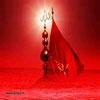
The pilgrimage to the holy shrines of the Prophets, Imams, and saints is called Ziyara. It is different from the ritual pilgrimage to Mecca, which is called Hajj. Hajj however is obligatory upon every Muslim man and woman under specific conditions, whereas Ziyara is not obligatory. Yet, it is much recommended in the innumerable narrations of the Prophet and the Imams who have stated about the rewards of those who perform such pilgrimages voluntarily. [See Sheikh Abbas al-Qummi, Mafaateeh ul-Jinan]
Simply, Ziyara is to visit the tomb and say a word of greeting, such as ‘Salaam (Peace)’. Other narrations have confirmed that it is acceptable to address such words of greetings from any place in the world while directing the face towards the direction of the tomb.
At any rate, it is advisable, according to reason as well as instructions of well-versed scholars, to commit to the statements of the Ziyaras that are related to the Ahlul Bayt (A.S), because such statements express the deep reality of status of the owner of the visited tomb and hint at the most accurate conducts to be practiced there.
On that account, it is recommended for the visitors of the tomb of al-’Abbas to follow the instructions mentioned in the saying of Imam Sadiq (A.S) regarding the Ziyara.
In this saying, the Imam instructs the visitor to stop opposite to the body of al-’Abbas turning the back to the kiblah, just like visiting the tombs of the prophets and Imams. This expresses the utmost courtesy befitting the elevated rank of al-’Abbas. In fact, to visit al-’Abbas after his death is same as visiting him during his life. This is because the martyrs are
“… alive with their Lord and receive sustenance from Him.” [The Holy Qur’an; Sura of Aal-Imran, Verse 169]
The author of Mezar ul-Bihar on page 165, records that Sheikh al-Mufid, Ibn al-Mashhadi, and Al-Shahid al-Awwal emphasized that the visitor of the tomb of al-’Abbas should first stop at the door of the shrine and seek permission to enter by saying: “Greetings of Allah… etc.” He then should enter and throw himself on the tomb and recite: “Peace be upon you, the righteous servant of God… etc.” He then should move to the direction of the head to offer the prayer and supplicate to God. He then should return to the tomb, stop at the two legs, and recite: “Peace be upon you, Abul-Fadhl al-Abbas… etc.”
Although these statements do not show whether it is advisable to stop at a specific side, it is understood that the direction of the kiblah is the intended.
Some scholars however advised to visit the tomb of al-’Abbas before that of Imam Hussain (A.S), because the earlier is the door to the latter.
It is also advisable to offer the two-units prayer of Ziyara at the tomb of Abbas. During his visit to the tombs of the martyrs of Karbala on the fortieth day after their martyrdom, Jabir ibn Abdullah al-Ansari visited the tomb of Abbas ibn Ali and offered a two-units prayer. [See Ziyarat ul-Arbaeen]
It is also advisable to kiss the tomb. This is proved through the narration of Safwan al-Jammal who relates it to Imam Sadiq (A.S):
“…You should then come near the tomb of Abbas ibn Ali and say… Then throw yourself on to the tomb, kiss it, and say… etc.”













